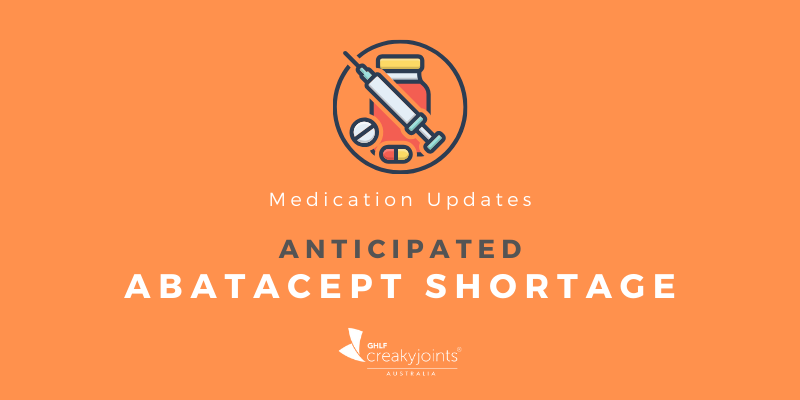In August 2017, the Council of Australian Governments (COAG) approved Australia’s new National Digital Health Strategy (the Strategy) entitled, ‘Safe, seamless and secure: evolving health and care to meet the needs of modern Australia’.
The aim of the Strategy is to ensure health information is available to patients and providers whenever and wherever it is needed by 2022. It will provide a solid planning framework through which to develop a coordinated and cohesive digital health network across Australia.
The Strategy document states:
“Digital information is the bedrock of high quality healthcare. The benefits for patients are significant and compelling: hospital admissions avoided, fewer adverse drug events, reduced duplication of tests, better coordination of care for people with chronic and complex conditions, and better-informed treatment decisions. Digital health can help save and improve lives”
The Strategy will benefit Australians by helping to:
- Prevent adverse drug events, reduce medical errors, improve vaccination rates, better coordinate care and better inform treatment decisions.
- Sustain a more efficient health system, through less time searching for patient data, reduction of avoidable hospitalisations, and reduced duplication of pathology tests and x-rays which inconveniences patients and increases the cost of healthcare.
- Improve healthcare availability and patient experience by putting the patient at the centre of their healthcare, and keeping people out of hospital.
- Provide greater access to healthcare for people living in rural and remote areas of Australia.
- Protect the national digital health infrastructure and secure the personal health information of Australians.
The Strategy will incorporate plans to develop and integrate a vast range of digital health technologies to facilitate shared access to important health information between health care consumers, providers, and other key stakeholders. These technologies will include (but are not limited to):
- Electronic prescribing and dispensing
- Telehealth
- Personal health records
- Secure messaging between providers and with patients
- Mobile health apps
The Australian Digital Health Agency (ADHA) was established in 2016 by the governments of Australia to lead the development and implementation of the Strategy. The Strategy was developed through extensive consultation with the Australian community and comprehensive analysis of the evidence.
Some of you may have participated in the extensive “Your health. Your say” consultation process earlier this year. The process invited Australian consumers, carers, healthcare providers, community groups, professional bodies and many other key health stakeholders to share their views on what a national digital health network should look like. More than 3000 people attended the 103 forums, workshops, webcasts and town hall meetings held across Australia. Over 1000 submissions and survey responses were analysed for key themes which were then used as a key input to inform all elements of the Strategy.
Why do we need a National Digital Health Strategy?
While ADHA acknowledges that there are many excellent digital health services already in place, they are not currently coordinated and lack appropriate standards, assessment and platform conformities, and clear guidelines for jurisdiction, privacy, and implementation.
As many readers with chronic health issues such as rheumatoid arthritis, Crohns’ disease, or lupus will know, navigating our health system can be a slow, confusing, and scary experience. It can be hard to access specialists or get appointments. Critical information is often not shared among different providers. Then, each time we see a new provider we have to fill out our medical history or current conditions on multiple forms. If we’re lucky, this might just lead to frustration. However, there is the potential for duplicated or overlooked information to lead to adverse events.
Of course, easy access to health information doesn’t just benefit those with chronic conditions. It is also essential for emergency, acute, and preventative health care.
My Health Record and Health Care Homes
By now, many of you will have heard of, or are using, the My Health Record platform operated by the Australian Government. This is an online system that allows all your personal health information to be stored securely in one place. This information can include your medications, allergies, pathology reports and diagnostic imaging scan reports. You can also link it to your Medicare account, so you can access all your medical appointment and Pharmaceutical Benefit Scheme records.
Doctors and other health professionals can also be given access to your records with your prior approval and in specific circumstances – such as in an emergency.
To date, over 5 million people have a My Health Record, while over 10,557 healthcare providers are connected, including GPs, hospitals, pharmacies, aged care residential services, allied health. It is currently an opt-in system; however, it will be phased into an opt-out system from 2018. By then, an estimated 98% of the population will have a My Health Record meaning Australia will have the highest participation rate in a national health record system in the world.
The Australian Government’s current Health Care Homes rollout will involve patients with chronic and complex conditions being supported by a care team which can be more innovative in the way it provides coordinated care. The National Digital Health Strategy states that the My Health Record platform will play an essential role in the coordination of care within the Health Care Homes system.
“The My Health Record system will support Health Care Homes by enabling better integrated care through opportunities to manage care plans, assessing progress against goals, monitoring the activities of the rest of the team and sharing other documentation including event summaries, current medications, referrals, and discharge and diagnostic information. Enabling the exchange of high-quality data between healthcare providers will enable healthcare teams and patients to better plan and coordinate care, and reduce barriers for healthcare providers to access and contribute to the My Health Record system.”
Do you have a ‘My Health Record’?
Let us know in this short poll and we’ll publish the results in the near future.
Other digital health initiatives
There are many other digital health initiatives that complement the My Health Record system. Some are already in place while others are under development. They range from Federal Government schemes, such as My Aged Care and a National Cancer Screening Register to State Government, community health, and private sector initiatives. For example, many hospitals are rolling out their own eHealth record systems and mobile phone app developers are finding new ways to bring control of your health information to your fingertips.
7 focus areas
The Strategy proposes 7 strategic priority outcomes to be achieved by 2022:
- Health information that is available whenever and wherever it is needed
- Health information that can be exchanged securely
- High-quality data with a commonly understood meaning that can be used with confidence
- Better availability and access to prescriptions and medicines information
- Digitally-enabled models of care that improve accessibility, quality, safety, and efficiency
- A workforce confidently using digital health technologies to deliver health and care
- A thriving digital health industry delivering world class innovation.
Challenges and concerns
Implementing a strategy of this size is bound to have its challenges – not the least of which is getting all public and private stakeholders to agree on how to deal with all the challenges!
As we’ve mentioned, there are already a number of digital health initiatives successfully operating at different levels across the country. The ADHA wants to incorporate or complement these initiatives if possible, to avoid unnecessary duplications. However, the technologies and platforms being used can vary greatly, as can the terminologies used by the health service providers. The ADHA needs to ensure that all users are ‘speaking the same language’ and that the technologies are all compatible and streamlined.
A big concern for all parties is the security of the personal health data.
“Recognising that healthcare information is some of the most private information, and that digital health innovation is reliant on secure digital operations, the Australian Digital Health Agency has established the Digital Health Cyber Security Centre. Its primary purpose is to protect the national digital health systems and personal health information of Australians from the cyber threat, and to raise the security posture of the Australian health sector.”
Resistance to change is a factor many organisations and individuals need to deal with in this day and age. There are many Australians who don’t trust electronic record-keeping in any form or don’t trust those with the power to access those records. Then there are some health professionals who aren’t yet convinced that digital health systems offer any major advantage over existing systems. For the new system to work, the ADHA will need to conduct extensive and ongoing training for all users.
How will the National Digital Health Strategy help you?
Once all the new initiatives are up and running, you’ll start to notice many changes in the way you use the health care system.
For example, if you are enrolled as a patient in the Health Care Homes system, you’ll be able to communicate with all your health care providers through your online portal at any time – and they can then share information, such as your blood test results, with each other. You get to decide who sees what information.
Having to make a doctor’s appointment just to get a repeat script will soon be a thing of the past. You’ll be able to request prescriptions online and your doctor can forward the script straight to your pharmacy, who can then notify you when it’s ready to collect.
Those in rural and remote areas are already starting to benefit from telehealth services that enable them to ‘visit’ their specialist via a video link up from their home or GP’s office. This can save many hours of unnecessary and uncomfortable travel and provide cost savings for all parties.
“A recent pilot program used telecommunications technology to allow patients with serious chronic conditions to be cared for from the comfort of their own homes, monitored remotely by a care team which could respond with appropriate treatment or stage early intervention, helping to keep people well and out of hospital.”
What can you do to prepare for these changes?
All of these new systems and platforms are being designed with you, the consumer, at the centre. That means that you will have a lot of control over where, how, and why your information gets shared. Therefore, you’ll probably want to know how the systems will work.
One of the first things you can do is set up or update your own My Health Record and familiarise yourself with the platform. You may also want to:
- Discuss your digital health records with your health clinicians and pharmacists.
- Raise any concerns you may have about the ADHS, My Health Record or Health Care Homes with your State and Federal MPs and health ministers.
- Contact the CJA Patient Council to find out more about how these systems may benefit you.
Above all, remember that, while all these systems may seem daunting and scary, they will be set up in user-friendly ways and you’ll have access to lots of support and resources. You’ll most likely discover that managing your health care has suddenly become a lot easier.
More information
1. National Digital Health Strategy: Safe, seamless and secure: evolving health and care to meet the needs of modern Australia
2. National Digital Health Strategy: A3 infographic
3. ADHA monthly bulletin #Share
4. CreakyJoints Australia: The Health Care Homes Basics You Need to Know
5. Consumers Health Forum of Australia: Webinar – Secondary use of My Health Record data
Cover photo credit: Starline – Freepik.com




